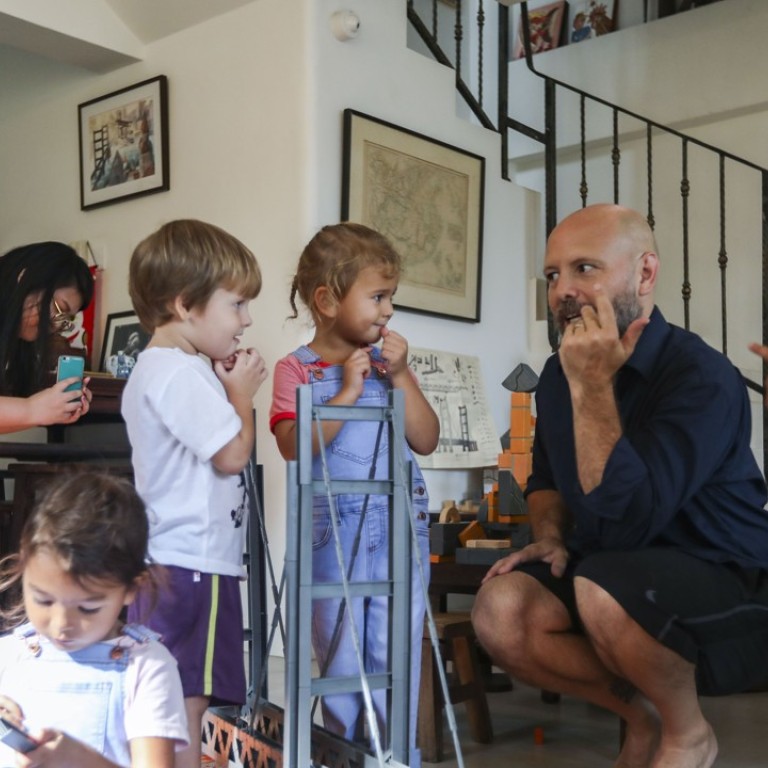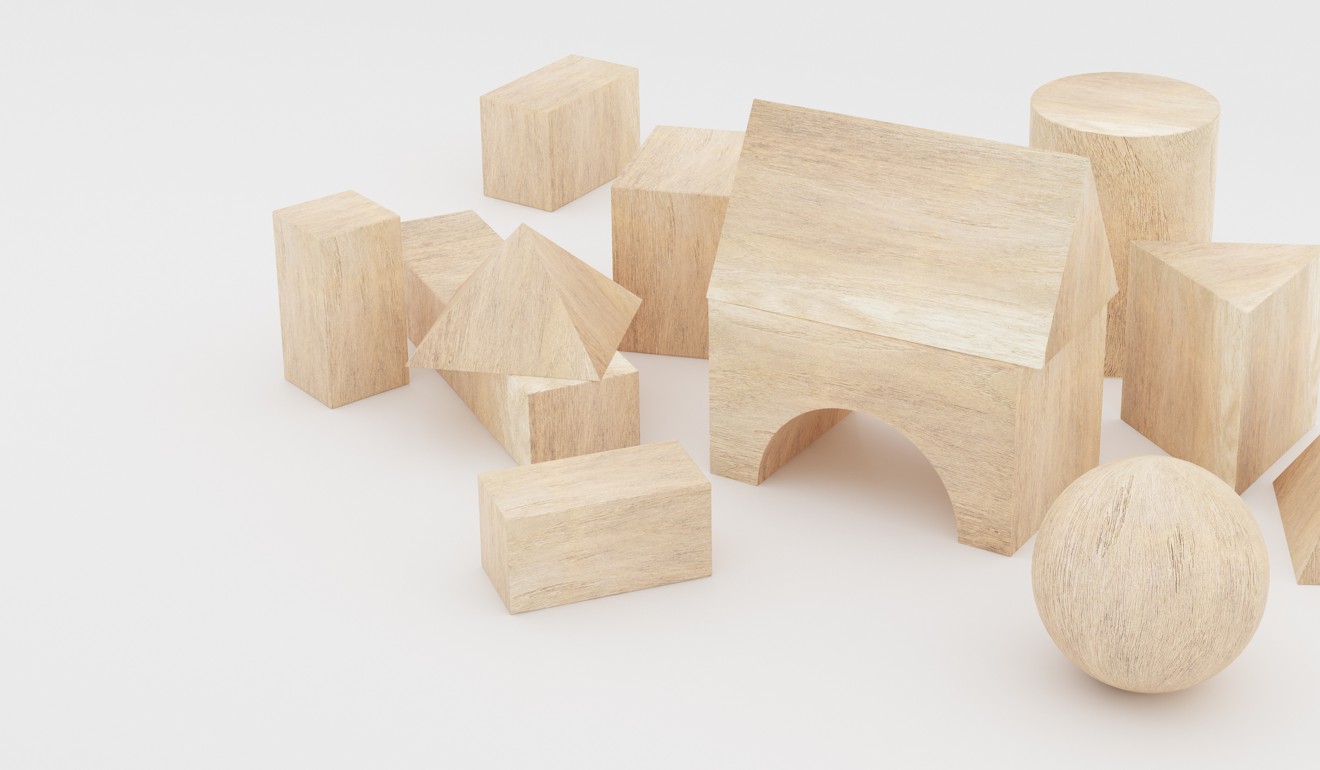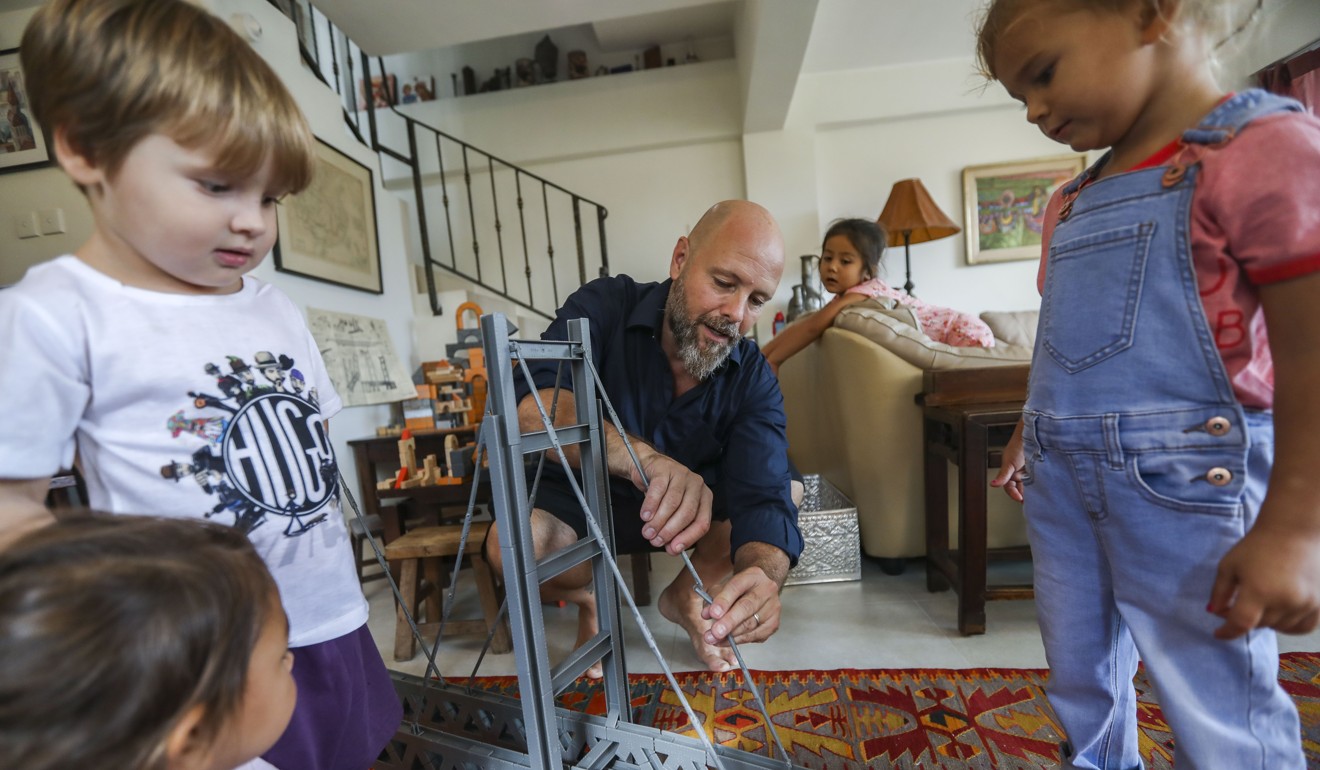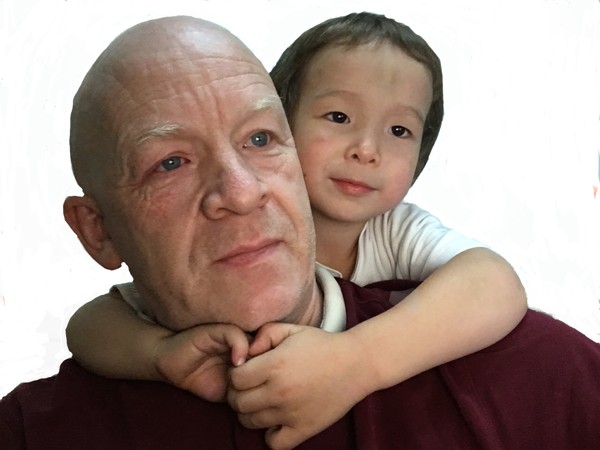
Why this Christmas a set of building blocks could be the best thing to buy your kids
- Early childhood pioneer Caroline Pratt came up with the idea of the wooden blocks as an alternative to the ‘repression of formal education’ in 1913
- Modern research shows they help children improve their mathematical skills and pay attention
Rather than a mobile phone or other smart device, a simple set of building blocks could be the best gift you buy your young child this Christmas.
When Amie Wong bought a set for her 17-month-old son to play with recently, she had no idea she was taking home a solution to her six-year-old daughter’s school-related angst. Anxious and withdrawn, her daughter’s breakthrough came the day she played with the blocks intended for her little brother.
The 12 best children’s books to give this Christmas
“Normally, my daughter would’ve wanted to play on her iPad when she came home from school. But that day, she came in just as her brother’s tower of blocks toppled over. She went to help him and then spent the afternoon building a city while telling cute stories. It was lovely – her city and her stories,” says Wong, a private swimming coach who will soon give birth to her third child.
Engrossed in play, Wong’s daughter finally vented about her struggles at school: she was terrified of a teacher who held her back from recess when she did not complete assignments during class time.

“She did not look up; she talked while she played. She said she found maths hard, so we used the blocks to help her with subtractions. She got it immediately. She’s doing great in maths now because she understands the basics from our time spent with the blocks,” Wong says.
Research bears out Wong’s theory. A recent study by researchers at Purdue University in the United States suggests that playing with blocks helps children improve their mathematical skills and their ability to pay attention. Semi-structured block play intervention improves maths skills, such as numeracy, shape recognition and mathematical language, and two indicators of executive functioning – cognitive flexibility and global executive functioning – the researchers found.
Wong reckons her daughter was able to grasp maths concepts because she was learning through hands-on play. “She’s relaxed when she plays with building blocks, so she’s more receptive to learning. If I’d made her sit at her desk that day to teach her subtractions she would’ve pushed me away and shut down,” she says.

The wooden blocks, called unit blocks, were developed by early childhood pioneer Caroline Pratt in 1913. Still doing the rounds in preschool classrooms, a basic unit block measures 140mm by 70mm by 35mm.
Additional blocks, which come in an array of shapes, are multiples or fractions of the basic unit. Pratt came up with the idea of the wooden blocks, at the time unpainted and unadorned, as an alternative to the “repression of formal education” of that time.
More than a century later, a plethora of research suggests students are still stifled by formal education. Children as young as three are experiencing symptoms of anxiety, according to alarming research by the Chinese University of Hong Kong’s social work department released early this year.
In its survey of about 1,300 children from 12 kindergartens in Hong Kong, nearly one in five students aged from three to six have anxiety symptoms that adults should be concerned about. Twelve per cent of the children surveyed need professional help or counselling.

One of the reasons children feel anxious is because they’re being told what to do all day long, says Timothy Stuart, who, convinced of the benefits of unit blocks, founded his company Unit Bricks in 2006.
“Children need open-ended creative play to function at a developmentally appropriate level. Through creative play, they’re in charge of their own learning. There’s no right or wrong and they don’t feel pressure or fear of failure. This is liberating for them and it builds their self-esteem,” Stuart explains.
With unit blocks, children learn about mathematical concepts through their play and exploration
Children are also being directed when they play with single-use toys. Playing with blocks, particularly unit blocks, provides an infinite number of opportunities for children to create their own learning because they’re not prescriptive, says Alex Viac, an early childhood teacher at an international kindergarten.
In class, after the weekend, it is common for children to attempt to replicate a building they saw over the weekend, using wooden blocks. But it could just as easily be a volcano, a castle, a zoo, a wall or a bed, he says.
“Most toys nowadays are products related to film and TV franchises, or construction toys with instructions designed to create a single product. Lego used to be a way to build any construction.
“Now it is mostly geared to following instructions. With unit blocks, children learn about mathematical concepts through their play and exploration. They become engineers, architects, stage designers, scientists, mathematicians,” he adds.
Building blocks easily incorporate science, maths, engineering and creativity in daily play, Stuart says.
Given the seal of approval by Purdue University Engineering for their Stem (science, technology, engineering and maths) learning capabilities earlier this month, his Mini Unit Beam Builder Sets give older children free rein to build to instruction or as they please.

Progressive, and now even traditional, early childhood professionals are going back to basics, says Stuart, who supplies blocks to more than 20,000 schools around the world including Woodlands and English Schools Foundation schools in Hong Kong.
“They recognise that unit blocks stimulate a child’s development across a wide array of domains – cognitive, emotional, social and physical – across all ages,” he says.
Building blocks grow with a child and serve multiple purposes, says Bree Crockett, an occupational therapist and managing director of SPOT Children’s Centre in Hong Kong.
Spirit of Christmas behind hotel’s gingerbread workshop for 30 Hong Kong children
The centre’s occupational therapists, speech and language therapists, and psychologists use both wooden and foam blocks to challenge a child to move up the developmental ladder through carefully tailored play interactions that are fun and intrinsically motivating.
In infancy, building blocks are included in international standardised assessments as a developmental milestone, she advises. If a child is able to stack a certain amount of blocks, they are showing hand-eye coordination, dexterity and cognitive development.
“These, in addition to spatial awareness, are all important building blocks to the functional tasks that occupational therapists work on, from learning to coordinate and sequence dressing skills like doing up buttons to handwriting and spatially organising handwriting on the page,” Crockett says.

Earlier this year, senior paediatric doctors in Britain warned that an overuse of technology was preventing children from developing hand strength and the dexterity needed to hold pencils. Their observations echoed the concerns of primary- school teachers in Australia who had seen a sharp decline in fine motor skills among children arriving at kindergarten.
Older children are not meeting developmental milestones for fine motor skills, either, according to researchers in Ireland, who found that 36 per cent of 11- to 12-year-olds are unable to master basic tasks.
Building blocks are also a powerful therapeutic tool, says Crockett. Psychologists may select to use building blocks as part of their therapy session with the child if they are looking to work on coping strategies.
“Building constructions fall down if you do not plan and balance the blocks well. This provides an opening to work on coping strategies to deal with frustration. Building constructions require flexible thinking, a crucial skill to learn as it allows a child to adapt to new situations, switch strategies to meet challenges, and solve problems through solutions,” Crockett says.

Blocks are regularly used in “SPOT Buddies”, a social skills development group that encourages children to work together and develop life skills such as negotiating, taking turns and communicating effectively to work towards a common goal.
Studies show that children with autism who attended play group sessions with toy blocks made greater social improvements than did children who were coached in the social use of language.
Normally developing children who work on cooperative projects also form higher-quality friendships, research suggests.
“Children use language to create narratives around their constructions, describing them, making their own play environments, developing rules for entry to their spaces, and negotiating with their classmates about how to use the space,” Viac says, based on his observations of play.
Schoolgirl’s plea: all I want for Christmas is to spend it with my family
“This helps them to gain social skills, to build relationships, to develop confidence in their own ideas, and helps them to manage their feelings. It is an important way for the children to make connections with the world around them.”
